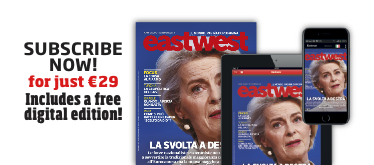A Hewlett-Packard futurologist looksat the coming “Age of Scarcity”.

The novel “The Go-Between,” by L. P. Hartley, begins with the line “The past is a foreign country: they do things differently there.” The same can be said of the future, it will differ significantly from today, but there are only a few times when, if you have the right kind of eyes, you can see the world change.
In many ways the best way to characterise the future is as “The Age of Scarcity” because there are already significant signs that a number of forces are driving increasing competition for, and hence, scarcity of resources.
Some of these key forces are:
Resource Pressures created by an ageing population, increasing demands for fresh water, energy and fossil fuels;
Trans-national companies that have more power than governments and respond to global pressures, not national ones;
Continuing Urbanisation and the growth of the mega-cities, making them more susceptible to resource interruptions;
Climate Change will displace coastal and other populations.
Increasing demands for skilled labour;
Economic Rebalancing creating more competition for resources from the developing world.
These create economic/business/governmental/social megatrends as institutions come up with ways to address these forces:
New Frontiers include 3d printing, genetics, bio-technology and commercial space travel; completely changing many of today’s businesses, especially manufacturing;
Technology-led new resource development models including oil shale, fracking, new micro and macro-energy generation and distribution;
The increasing overlap of the physical and virtual worlds;
New Business Models: virtual companies, customer engagement, citizen centricity, etc;
New social models: Human beings seem to have an insatiable desire to build and be part of social networks and micro-communities.
Internet and mobile devices have freed these networks from time and place. No longer is your community limited to your family or village.
Unlike these traditional communities, the communities of today consist of many people you may never have physically met. Today you can become part of any global micro-community you identify with:
Social media adds to the range of social interactions that people can have, creating a wider range of social engagements both virtual and physical;
New work models: including careers made up of multiple small “joblets” rather than a single career, increased immigration to meet needs for skilled employees, especially in countries with ageing populations, and so on;
Education 2.0 is a shorthand term often used for a new approach to education that is designed to address the needs of the information society rather that the industrial age that defined our current education models. Future education needs to be more focused on building collaboration and creativity than on preparing people for exams that will determine their position in an industrial hierarchy;
New Models for Healthcare, spreading over many of these categories.
Every generation has had an industry that changed the fabric of society and, over the last 40 years, Information Technology has been that defining industry. It has changed not just business processes and personal productivity, but the very ways people communicate, collaborate and live their lives.
IT is increasingly abundant, so we can use it to address some of the scarcity issues above… But the technology alone does not solve the scarcity problems. Business will increasingly adopt information-based business models… increasingly about how data is connected, processed, managed and exploited.
Every product or service has a data and processing history. Looking at a simple ballpoint pen as an example, it was designed; the component parts needed were manufactured, sourced and assembled; it was marketed, transported and sold. For the top-of-the-line models, refills also need to be offered. All of this requires business processes and generates data.
A further extension (of the technology) will allow end-customers to feed back their opinions on the pen, its feel, how long the ink lasts, the style, the colour and everything else that is important about a pen. This will permit the maker to learn from the customers and change products and services to better meet their needs and thus grow the business.
Of course, the increasing use of computers may also destroy the market for traditional writing implements altogether. After all we don’t use clay tablets for writing any more. It’s not just products, but whole industries that will be transformed by this approach.
The future for healthcare – for instance – needs to shift from the current treating sick people model, to a holistic and integrated wellness approach where the goal is to help people stay healthy; improving their quality of life and reducing the cost of healthcare.
Someone else said it better:
“We have come too far, we have sacrificed too much, to disdain the future now.” John F. Kennedy (1917 – 1963)
A Hewlett-Packard futurologist looksat the coming “Age of Scarcity”.





